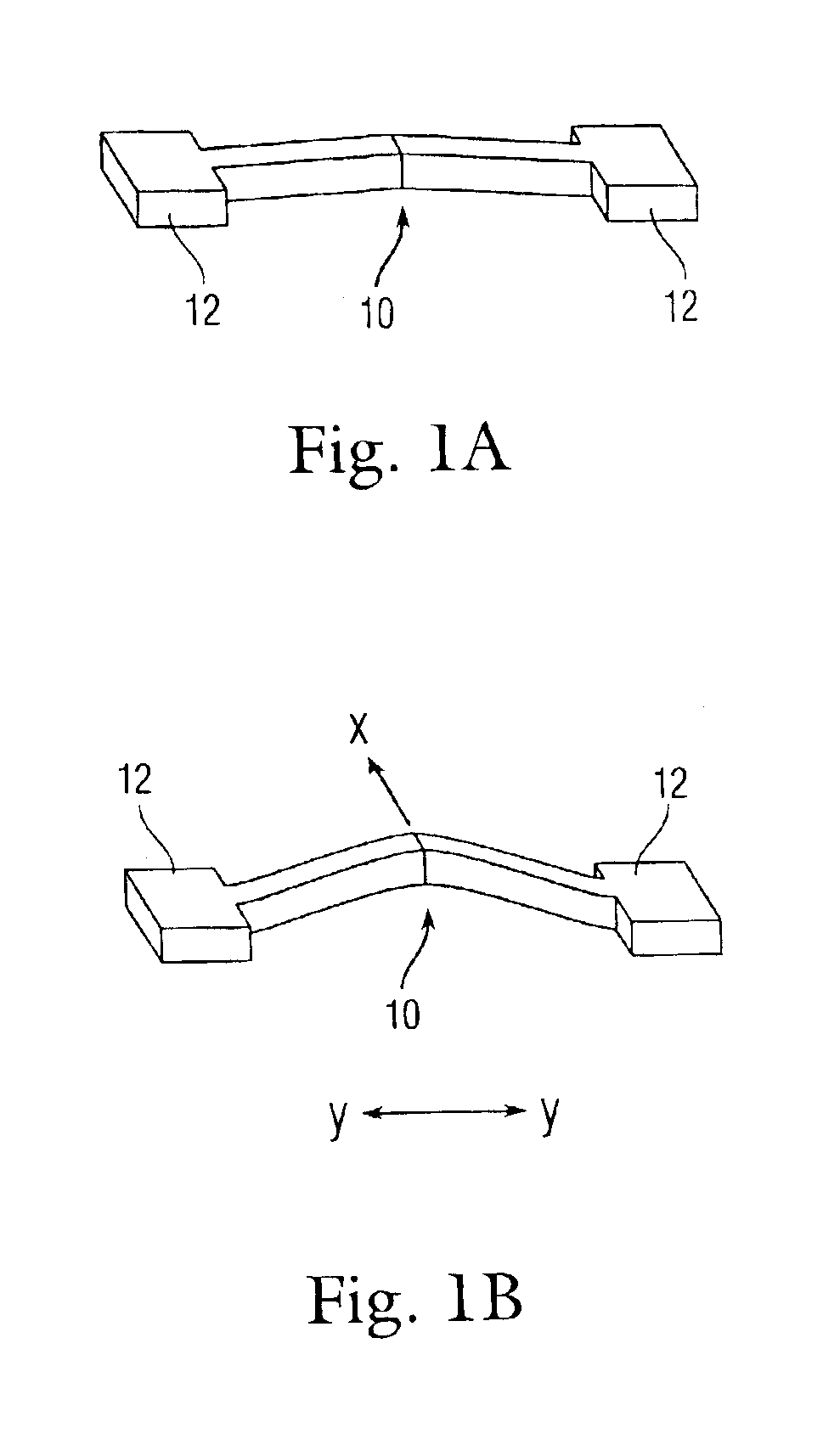MEMS optical switch with thermal actuator
- Summary
- Abstract
- Description
- Claims
- Application Information
AI Technical Summary
Benefits of technology
Problems solved by technology
Method used
Image
Examples
Embodiment Construction
In a moving fiber type optical switch, two optical fibers are placed in alignment channels on a chip surface. The optical fibers face each other and can be offset, depending on whether or not optical power transfer is desired in the unpowered state. An actuator for at least one of the optical fibers acts to push the fibers in or out of line with each other so that optical switching takes place.
FIGS. 1A and 1B illustrate the principle of operation of a v-beam thermal actuator. FIG. 1A is a perspective view of a v-beam 10 in an off state. FIG. 1B is a perspective view of the v-beam 10 of FIG. 1A in an on state. FIG. 1A shows a v-beam 10 connected at its ends to anchors 12. When an electrical current is applied to the v-beam 10 through the anchors 12, the v-beam increases in temperature because of resistance heating. The rising temperature of the v-beam 10 causes it to expand in the y-direction shown in FIG. 1B. However, because the v-beam is constrained by the anchors 12 in the y-dire...
PUM
 Login to View More
Login to View More Abstract
Description
Claims
Application Information
 Login to View More
Login to View More - R&D
- Intellectual Property
- Life Sciences
- Materials
- Tech Scout
- Unparalleled Data Quality
- Higher Quality Content
- 60% Fewer Hallucinations
Browse by: Latest US Patents, China's latest patents, Technical Efficacy Thesaurus, Application Domain, Technology Topic, Popular Technical Reports.
© 2025 PatSnap. All rights reserved.Legal|Privacy policy|Modern Slavery Act Transparency Statement|Sitemap|About US| Contact US: help@patsnap.com



